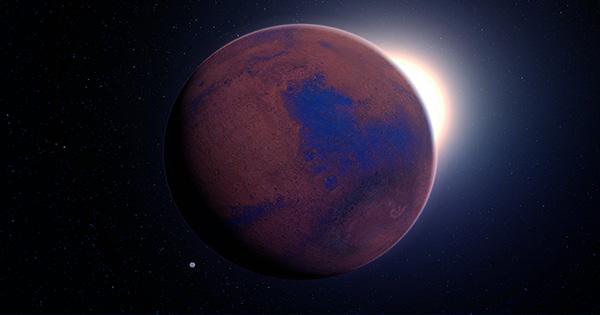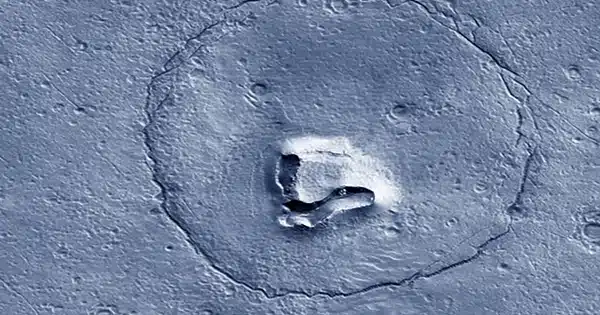On June 22, 2023, the 832nd Martian day, or sol, of the mission, NASA’s Perseverance Mars rover captured this doughnut-shaped rock in Jezero Crater from about 328 feet (100 meters) distant with its Remote Microscopic Imager (RMI), part of the SuperCam instrument.
Strangely shaped rocks are not rare on Earth or Mars; they are frequently created over eons as winds sandblast rock faces. This boulder may have formed as a result of a smaller rock (or numerous rocks) eroding toward its core. This created a cavity, which was later widened by the wind.
The image below depicts the same rock in its larger context, as seen by the rover’s Mastcam-Z instrument from around 1,312 feet (400 meters) away on April 15, 2023, the 765th Martian day, or sol, of the mission.

SuperCam is directed by Los Alamos National Laboratory in New Mexico, which created the instrument’s body unit. Several spectrometers, as well as control electronics and software, are included in this section of the apparatus. The mast unit, including RMI, was conceived and manufactured by multiple laboratories of the CNRS (the French research center) and French universities under the contracting authority of the French space agency, Centre National d’Études Spatiales (CNES).
The Mastcam-Z instrument is led by Arizona State University, which collaborates with Malin Space Science Systems in San Diego on the design, fabrication, testing, and operation of the cameras, as well as the Niels Bohr Institute of the University of Copenhagen on the design, fabrication, and testing of the calibration targets.
Astrobiology, especially the search for traces of ancient microbial life, is a significant goal for Perseverance’s mission on Mars. The rover will analyze the planet’s geology and previous climate, pave the route for future human exploration of Mars, and be the first mission to gather and cache Martian rock and regolith (broken rock and dust).
Subsequent NASA missions would deploy spacecraft to Mars in collaboration with ESA (European Space Agency) to collect these sealed samples from the surface and return them to Earth for in-depth investigation.
The Mars 2020 Perseverance mission is part of NASA’s Moon to Mars exploration strategy, which includes Artemis Moon missions to help prepare for human exploration of the Red Planet.
















